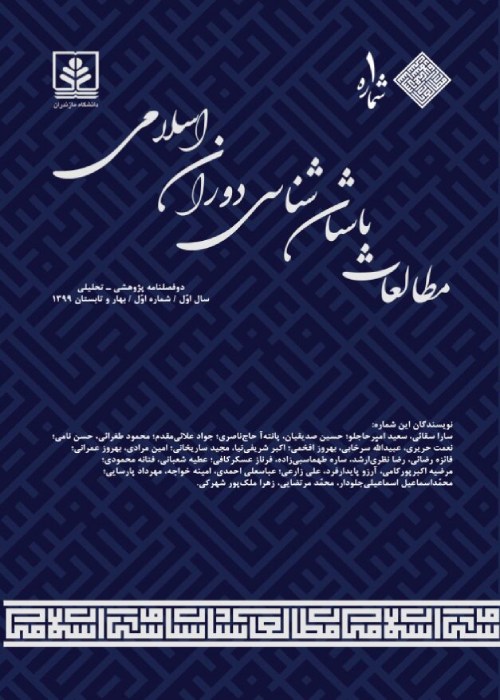The study of sacred spaces in caravanserais along the Silk Road
Khorasan has long been a crossing point for commercial and economic routes, including the Silk Road in the Islamic era. Due to its proximity to the holy shrine of Hazrat Reza, its religious importance was raised; This led to the construction of many service and public utility complexes, including caravanserais along these transportation networks. In the Islamic era, local governments of Iran tried to control parts of the main Silk Road that was in their territory; Including Taherids dynasty in 207 A.H on Rey and Neyshabour roads, Saffarids in 260 A.H on Neyshabour and Rey roads, Samanids in about 290 A.H on the roads of Rey and Zanjan, Buyids (Dylamids) in 357 A.H on Rey, Ghaznavids in the second half of the third century on Kabul and then in 440 A.H on Ray, Seljuq in 429 A.H on Neyshabour and then on Rey and Hamedan, and finally the Ghozes in 584 A.H as they conquered Azerbaijan and its roads. Today in Iran, along the main roads of the Silk Road, at a distance of one Manzel which is equivalent to six Farsakhs or 24 kilometers, there are traces of caravanserais which are either old or reconstructed on the remains of previous caravanserais. These caravanserais are scattered in axes such as Neyshabour-Khaf-Herat, Neyshabour-Toos-Merv and Gorgan-Neyshabour axis, all of which were along the Silk Road and Khorasan commercial routes. Neyshabour-Khaf and Herat axis is the longest route of the Silk Road in Khorasan that led to Herat and connected many famous cities of Khorasan and consisted about 14 caravanserais. The other one is the axis of Neyshabour, Toos and Merv; the road from Neyshabour to Merv was considered one of the highways of the middle periods of Islam because this road connected the most popular places and cities which were politically important. The third axis, which is in the category of sub-axes, is the Gorgan-Neyshabour axis; this route connected Gorgan to the axes of Khorasan, and the caravanserais along this route have been mentioned numerous times in historical texts and sources. Some caravanserais in Khorasan, depending on culture and ritual demands of the travelers, also had religious spaces such as prayer halls and mosques, which is important in its kind. These religious spaces often have a simple rectangular space in the direction of Qibla, which is different from other spaces despite the element of religious architecture (altar). Some of them have a separate mosque in the form of a nave next to the caravanserai. Citing most of the caravanserais on the Silk Road, a small number of them have religious spaces such as altars and mosques.
Unfortunately, the study of religious spaces in caravanserais, either because of their scarcity or the destruction of the majority of them in the Silk Road transportation axes, has always been far from the view of the researchers; Therefore in this article, considering the documents, researches and field observations, we try to make a correct analysis of the religious spaces in caravanserais of the Silk Road of Khorasan and clarify the relationship between the existing caravanserais and their religious and economic importance.
The results of document and field study, using the analytical approach and interpretation of the data, suggest that out of 68 caravanserais in the main and secondary axes of the Silk Road in Khorasan, only 7 caravanserais with religious spaces have altars, and only one of them has a mosque within which is outstanding.
To some extent, this indicates the greater economic importance of the region than its religious significance. Meanwhile, the caravanserais located in the center of the Iranian plateau have relatively more religious spaces, especially mosques. The religious elements studied in this research are mostly in the form of simple altars and the shape of arches which are located in the corners of the wall of the Qibla and none have decorations; Only in one case in Robat Gholi, such as Robat Sharaf, we can mention stucco decorations. Also, due to the proximity of the shrine of Hazrat Reza with the mentioned caravanserais, the first notable feature is the religious importance of these caravanserais. But despite the conducted research on religious spaces of caravanserais along the Silk Road in Khorasan, the religious spaces of Khorasan section of the Silk Road are less than the ones in caravanserais of central Iran; This is probably a sign of the economic importance of these transportation hubs in relation with their religious significance.
- حق عضویت دریافتی صرف حمایت از نشریات عضو و نگهداری، تکمیل و توسعه مگیران میشود.
- پرداخت حق اشتراک و دانلود مقالات اجازه بازنشر آن در سایر رسانههای چاپی و دیجیتال را به کاربر نمیدهد.


